ON THIS WIKI
Tutorial:Bee Basics (Apiculture)

|
This article is part of the Feed The Beast Wiki's Tutorials section. |
The basic mod that introduces Bees is Forestry; there are also two child-mods, Extra Bees and Magic Bees. Extra Bees information will be in orange. Magic Bees information will be in purple.
Contents
Notes[edit]
A Note about Spoilers[edit]
This tutorial includes very minor spoilers. Players who have collected a variety of wild bees and attempted even the most basic crossbreeding of two different kinds will likely not find anything surprising on this page.
Early Game Bees[edit]
It may seem like a good idea to get into Forestry's Bees at the very beginning, but it is not an ideal system to start with. A safe base with a reliable power source, access to a Pulverizer or Macerator, and enough equipment to do some deep mining should be prioritized.
This tutorial presumes that the player is fairly well established, with access to basic metals and gear. At bare minimum, a source of MJ power (or an Electrical Engine or Blulectric Engine to convert EU/Watts into MJ) should be available as well as Tin, Copper, Redstone, and at least one Diamond.
Where to Begin[edit]
While it is tempting to start by running out to collect bees, greater success can be had by first preparing some basic equipment. Each breeding pair needs its own hive, an Apiary or Bee House. There are three ways to acquire Apiaries; by building one with a Carpenter, buying one from an Apiarist Villager, or taking one from the same villager's yard. As the machines for making Apiaries are necessary for other aspects of Bees, it's worthwhile to build them even if going the villager route or sticking with the simpler Bee House.
These three basic Forestry machines are used extensively for Beekeeping, building them should be a primary goal. All of them run off MJ, which is produced by Engines. Choose an engine type appropriate to available power sources. Centrifuges and Carpenters can be run off Redstone Engines, but this is incredibly slow; It takes ten minutes to process a single comb in a Centrifuge with a fully warmed Redstone Engine. Provided with full power, a Centrifuge can process a comb every five seconds.
| Carpenter | This machine is used to construct Apiaries and their central component, Impregnated Casings, as well as Scented Paneling for Alveary blocks, Impregnated Sticks, the Beealyzer and Apiarist Database. Even if purchasing Apiaries, it will be needed to construct the Beealyzer. | |
| Centrifuge | This is the primary processing machine for Bees. All Combs need to be put through a Centrifuge to extract the component items. Large automated bee farms will need multiple Centrifuges. | |
| Squeezer | The Squeezer is used to extract Honey from Honey Drops and Honeydew, Seed Oil from seeds, and liquids from specialty types of Propolis (Watery Propolis, Oily Propolis, etc.) |
| Beyond the Basics - Energy |
|---|
Bee Houses[edit]
A Bee House is the easiest of three housing options for working bees, needing only wood slabs, planks, and a single Comb of any type. Bee Houses have several unique features compared to Apiaries and Alviaries; they offer a built-in production, lifespan and pollination boost, cannot accept Frames, and prevent mutations. Even advanced Beekeepers will find Bee Houses to be useful when attempting to stabilize a lineage. If a Beealyzer is not yet available to determine the Ignoble/Pristine status of Queens/Princesses, Bee Houses are the best choice as they will never fail to produce a new Princess even with Ignoble stock. Bee Houses cannot be automated with pipes. Bee Houses cannot be used to breed new species of bees; an Apiary or Alveary is necessary.Apiaries[edit]
Apiaries are the second tier of player-made hives for bees to live in. The only troublesome part about constructing an Apiary is the Impregnated Casing; it must be built in a Carpenter, and requires Seed Oil. Seed Oil is made in a Squeezer, and requires a large number of seeds - 50 Vanilla Pumpkin, Melon, or Wheat seeds will yield one bucket/can/capsule of Seed Oil. One unit is enough to make four Impregnated Casings. If an Apiarist Villager is located, trading large numbers of logs for an Apiary is a viable alternative. Otherwise, a plantation of seed bearing crops will be necessary. Flax, despite its lower yield than vanilla crops is worth considering, since it will give string as well for Canvas Bags or Golden Bag of Holdings. The extra inventory space will be helpful for bee collection.Multi-Block Alveary[edit]
The Alveary is the highest tier of hive available for bees. These massive hives dwarf their much smaller predecessors, being three blocks wide and long, and four blocks tall. They can be customized with various Housing blocks that will adjust the climate or provide special abilities to the bees within. Alvearies require both Pollen and Royal Jelly, for the Scented Paneling used in construction, thus can only be reached by using Apiaries to mutate new species.| Beyond the Basics - Pipes or Containers? |
|---|
There are quite a few options for moving Seed Oil from the Squeezer to the Carpenter. Containers such as Empty Cells, Aluminum Cans, or Wax Capsules are easy to make with early resources and can store Seed Oil, but will be consumed and not returned when placed in the Carpenter. Wax Capsules are the least expensive, since most working hives will generate Beeswax.
Seed Oil can also be pumped through Liquiducts or Waterproof Pipes. Of the two, Liquiducts are faster over long distances and require no engines, but need more infrastructure to create. BuildCraft's waterproof pipes are inexpensive but need an external power source or Autarchic Gate to run.
The Beealyzer[edit]
While it is technically not a mandatory piece of equipment, without a Beealyzer there is no way to examine bees in detail; any mutations will be largely a matter of luck, and selective breeding near impossible. There is no way to make meaningful progress with bees without one of these. When first acquired, a bee will have the species name matching its appearance and <Unknown> below it, and no other information. By using Honey Drops or Honeydew in the Beealyzer to analyze the bee, its full genetic makeup will be given. The Beealyzer is another Carpenter recipe, and needs both redstone, glass panes, and a single diamond.Extras[edit]
While nice to have, none of these items are mandatory. They can be added to the player's available tools as time and resources allow. The Habitat Locator is more of a novelty than a useful tool; early on Honey Drops are too precious to waste for finding biomes, when the same can be done simply by exploring, and in the late game Alvearies allow precise adjustment of climate. Frames are quite helpful. The three basic types from Forestry boost hive production by 100% each, varying only in their durability. Extra Bees and Thaumic Bees introduce a great variety of frames, all with varying effects on lifespan, mutation rate, and productivity.
| Item | Function |
|---|---|
| Used to find a matching habitat for a given bee. Requires Honey Drops or Honeydew. | |
| Lowest durability but easy to make. Only requires sticks and string. Boosts hive production. | |
| Medium durability. Requires Impregnated Sticks. Boosts hive production. | |
| Longest durability. Only available from an Apiarist Villager. Boosts hive production. | |
| Tracks discovered species, encyclopaedia of traits, produce, and discovered mutations. Apiarist Databank is a stationary version. | |
| Reduces lifespan while increasing production. Useful for faster turnover of generations. | |
| Increases odds of a successful mutation, at the cost of lifespan and production. |
Bringing Home the Bees[edit]
Bee Sources[edit]
Anyone who has explored their general surroundings on a FTB map has most likely stumbled across one or more Wild Beehives. These boldly striped blocks spawn as part of Forestry's world generation, mostly on the surface, but certain types can appear in water, underground, or in other dimensions. Beehives are the most common source of initial breeding stock.
| |
|
|
|
|
|
|
|
|
| |
| Forest | Meadows | Modest | Jungle | Snow | Swamp | Water | Marble | Rock | Nether | End |
Beehives are not the only place that bees can be found - rarely a single special type of bee will be inside a Dungeon loot chest, and Villages may have an Apiarist's yard that can be raided for Queens, Frames, and two Apiaries. Apiarist villagers will also offer bees as part of their trades.
Wild Bee Collection[edit]
Only certain tools can harvest beehives; the easiest one to make is the Scoop. Scoops are quite fragile, with only ten uses before breaking. Care should be taken to not use a Scoop on any other block, for they will lose durability on anything. For long bee hunting excursions, carrying a stack of wool, wood and a crafting bench will be more economical on space than multiple scoops. For those already well established with ample resources, a Scooporator MX200 Turbo, Mining Laser, Wand of Excavation, Bedrock Pickaxe or Vajra will also do the job.
Wild hives are a non-renewable resource, which may necessitate travelling long distances to find the right biomes for the type of bees desired. A hive will always yield a Princess, often a Drone as well, and sometimes a Comb. To further complicate matters, the Princesses dropped from a broken hive will be either Ignoble or Pristine. Princesses do not stack, while identical drones will. Because Princesses do not stack, inventory space quickly becomes a problem. This can be alleviated with Canvas Bags, Adventurer's Backpack, Golden Bag of Holding, Bag of Holding, an Ender Pouch linked to a sorting system, or an Apiarist's Backpack. For cost versus space, the Apiarist's Backpack has 125 spaces for bees, but requires five basic Combs to make. Canvas Bags only hold 27 items, but can take things other than bees and only requires lots of string and some sticks. A Golden Bag of Holding will accept up to 54 items of any kind, but needs gold and wool.
Certain types of hives are easier to collect with special equipment. Potions of Night Vision make finding Water Hives much easier to spot by rendering deep bodies of water transparent. An Electric Jetpack or Advanced Electric Jetpack can speed exploration and make Jungle Hives more easily reached, for they are often found very high up in the canopy. Meadows, Modest and Marble hives are the easiest to locate, for they are found on the ground in biomes with little cover, such as Meadows, Desert and Plains. Possibly the most effective method of getting bees is to simply carry a Scoop or other tool plus some extra storage on any exploration mission, and collect along the way.
The Productive Hive[edit]
To get bees to work, four things must be true. They need to be in an Bee House, Apiary or Alveary, in an environment that matches their needs, the preferred "flower" must be in range, and a Princess needs to be paired with a Drone to produce a Queen. Most species also need an unobstructed view of the sky from their hive, and will not work during rain or at night.
Bee Lifecycle[edit]
A Princess bred to a Drone transforms into a Queen, and the drone is lost in the process. The hive will produce items appropriate to the species of the Queen, as long as the queen lives. The drone's genetic contribution will only show up in the next generation. The bar on the left hand side of an Apiary indicates remaining lifespan. When the Queen dies, she spawns one Princess and a number of drones equal to her active Fertility trait. All of these bees will have a mix of traits from the parents. If the life bar is not dropping (it should go down approximately every 30 seconds), then there may be something wrong with the environment. Check the tabs to the right in the Apiary for a red warning tab - it may provide a clue to the problem. Apiaries should be emptied after each cycle so there is space for the next round of combs and bees. There is an internal buffer for overflow of the hexagon-shaped output slots, but it can be unreliable and lead to the loss of Princesses sometimes; better to ensure that there is enough free space.
| Error Message | Meaning |
|---|---|
| No Princess | There is no Princess in the hive. |
| No Drone | There is no Drone in the hive and no Queen either. |
| No Flower | The Queen's preferred Flower is not in range.
Use the Beealyzer to see what she wants, and make sure it is within her Area range. |
| Sky Obstructed | There are non-transparent blocks above the hive, and the Queen doesn't have the Cave ability. |
| Rain | It's raining, and the Queen doesn't have the Flyer ability. |
| Not Daytime | It's night, and the Queen doesn't have the Nocturnal ability. |
| Not Bright Enough | The hive's line of sight to the sky partially obstructed or it's dawn/dusk. |
While a hive is active, a stream of bee shaped particle effects will shoot out of the top of the Apiary, in a color appropriate to the bee species inside. This display can be quite striking at night with multiple types of bees working away. Some negative Effect traits also show a particle effect; Poison for example has small green drops. When the particle effects stop, it means a hive has completed its cycle or progression has stopped due to the above mentioned problems.
Tolerances and Extra Abilities[edit]
There is no biome that supports all species of bees; Climate and Humidity desired varies from species to species, but the ocean biome certainly comes close. While the preferred environment for a given species cannot be changed, an individual bee's tolerances can. This can allow bees to work in a greater variety of biomes they would normally refuse to produce in. Tolerances are shown on the second page of the Beealyzer. An Up arrow indicates a greater tolerance for warmer or wetter conditions than the preferred climate, while a down arrow indicates a tolerance for cooler or drier environments. Both arrows together indicate a tolerance in both directions. The number indicates the amount of "steps". For example, a Normal/Normal bee with Up/Down (1) Temperature Tolerance will work in Warm, Normal or Cold biomes. Matching Biomes for a species can be checked with the Apiarist Database, and the current biome's environment shown by setting down an Apiary, and checking the right side tab.
| Climate | Icy (0% - 4%) < Cold (5% - 19%) < Normal (20% - 119%) < Warm (120% - 199%) < Hot (200%) < Hellish (200%+) |
| Humidity | Damp (100% - 90%) < Normal (90% - 30%) < Arid (30% - 0%) |
There are three extra abilities that bees can have; Cave, Flyer and Nocturnal. Cave allows bees to work underground or with an obstructed line of sight to the sky, Flyer bees will work even while it rains, and Nocturnal bees work day and night. Both tolerances and extra abilities can be transferred freely between bee species through breeding.
Getting Established[edit]
The initial concern when starting out with bees is a steady source of Honey Drops to analyze with. Wild bees don't produce very much, so setting up a simple production zone is useful. Choose a bee species that will work in the current biome without any modifications if possible. Breed only matching wild bees, so Forest x Forest, Meadows x Meadows, etc., so that all the offspring will also be identical. These bees can be cycled through Bee Houses repeatedly for basic Combs. There is no need to analyze successive generations since they should all be purebred. If the resulting drones are not stacking, either there are some genetic variations in the original stock (this can happen rarely with Forest Bees in particular), or another species was introduced. The table below lists all the wild bee species, their environmental needs and any special traits.
| Mundane Bees (Very Minor Spoilers) | ||||
|---|---|---|---|---|
| Species | Climate / Humidity | Flower | Notes | Produce |
| |
Normal / Normal | Flowers | x3 Fertility. Rarely has Flyer ability. | |
| |
Normal / Normal | Flowers | No special qualities. | |
| |
Hot / Arid | Cacti | Difficult Flower/Environment needs. Nocturnal.
+/- 1 Temperature tolerance, +1 Humidity tolerance. |
|
| |
Warm / Damp | Fern or Vine | Caution! Poison Effect. Good early source of Propolis & Silk Wisps.
+/- 1 Temperature tolerance, -1 Humidity tolerance. Difficult Environment needs. |
|
| |
Icy / Normal | Flowers | Difficult Environment needs. Can yield early Pollen.
x4 Fertility. +1 Temperature tolerance. |
|
| |
Normal / Damp | Mushroom | Difficult Flower needs without Mycelium.
+/- 1 Temperature tolerance, +/- 1 Humidity tolerance. |
|
| |
Normal / Damp | Lily Pad | Cave / Flyer abilities, +/- 1 Humidity Tolerance. | |
| |
Normal / Normal | Stone | Cave, Flyer and Nocturnal, +/- 2 Humidity and Temperature.
x1 Fertility. Rocky Comb has poor yield. |
|
| |
Normal / Normal | Flowers | No special qualities. | |
If there is no wild species that will thrive in the current Biome, a small coastal or river area may prove helpful if there are any nearby. Beach, River and Ocean are classed as Normal/Normal. Otherwise, it may be necessary to set up a temporary production zone elsewhere. If only one or two pairs of the desired species are available, their offspring can be used to clone more by mating excess drones to other Princesses. In general, Normal/Normal climates are the best for a permanent bee raising area, even better if there are a variety of climates nearby. Hot/Arid, and Icy or Cold / Normal are very helpful to have for working with Modest and Wintry bees.
Biomes[edit]
Biomes matter. While it is possible to increase the number of different environments a given bee will work in using tolerances, each species will always prefer its original climate. Specialty produce will only be generated if a bee is located in its preferred habitat. Certain mutations can only be created in specific biomes as well. An ideal location for setting up a long term bee production site is one where multiple biomes with different climates intersect. A Hot/Arid, Icy/Normal and Normal/Normal biomes are going to be most useful for the majority of players. An experimentation zone for testing crossbreeds and making new mutations will work best if in a Normal/Normal biome, since most bees prefer or at least can tolerate it with some added traits.
Bee Mechanics[edit]
This is a summary of how bees work. For a more detailed treatment of the topic, see Bee Breeding.
Traits[edit]
All bees can be described as a collection of genetic traits. These determine everything about the bee, including the environment it needs to live in, what conditions it will work under, what it will produce, and more. Each bee has two genes for each trait, an active gene and an inactive gene. The active gene is the one that the bee will actually use, while the inactive gene is only useful for passing down to future offspring. Breeding two bees with identical traits will always result in identical offspring. Breeding bees with different traits creates offspring with a mixture of the parent's traits.Certain traits cannot be altered through breeding, as they are bound to the Species trait. These include Produce (the items the bee makes), Climate, Humidity, and appearance. Because Produce is species-linked, new species need to be discovered to obtain different items. Ignoble/Pristine is an exception to the general rule - this trait is only carried by Princesses/Queens, is linked to the specific individual bee rather than the species, and cannot be altered via Breeding.
Mutations[edit]
There are only ten species of bees available in the wild; all the others are a result of mutation. Certain combinations of bees have a chance of mutating into a new species when paired up with each other. Mutations are not guaranteed even when crossing two compatible species. The odds of a successful mutation vary based on the species being created, and order of the pairing doesn't matter (i.e. Forest Princess x Meadows Drone will work just as well as Meadows Princess X Forest Done). The intended mechanic for discovering new mutations is experimentation; for those who find this too frustrating, the Bee Species page lists all the possible combinations that result in new species. Certain species also have special environmental needs in order to be created, such as a specific biome.The usual result of a successful mutation is a hybrid of the new species with one of the parent species. A bee which mutated for both species genes will have all the default traits for the new species, and none of the parents, a purebred. A bee that is a partial mutation will have some genes of the new species, and some from the parent species. The rate of mutation can be boosted by using Soul Frames, Metabolic Frames, or Mutators in an Alveary. Researching a desired mutation using an Escritoire offers a permanent 5% bonus for most species. Bee Houses do not allow mutations, though inheritance and hybridization will still work.
Dominant versus Recessive[edit]
Dominant genes are shown in red/pink, recessive genes are blue. If a bee has two dominant or two recessive genes, the Active/Inactive order is determined at random. If a bee has one dominant and one recessive gene for a given trait, the dominant gene will always be Active.
Purebred versus Hybrid[edit]
All bees from the wild are purebred, that is, have both inactive and active Species traits that match. In the Beealayzer, it will list Species: Marbled Marbled, for example; this is a purebred Marbled bee. A Hybrid will have two different species, such as Marbled Forest, or Tropical Forest, and have its species shown in blue for the tooltip once analyzed. Hybrids are the result of a bee inheriting two different species genes from its parents. While Hybrids they can yield the Produce of both species (this is an exception to inactive genes not being used for the current generation), they are unstable and do not breed true. The offspring of two identical hybrids may be hybrids themselves, or pures of the component species. Hybrids are also less effective to use for cross-breeding, making pure strains desirable.
Pristine vs Ignoble Stock[edit]
All Princesses and Queens have either the Pristine or Ignoble trait, while Drones possess neither. Approximately 50% of all princesses/queens are of the Pristine type, but this distribution is not even across the species. Rarer bees have a much higher chance of being Pristine, while common species may be as few as 30% Pristine.Pristine means that the bee is stable, and can be used to breed unlimited generations. Ignoble means there is a chance after a number of life cycles that no Princess will be created, ending the lineage. Frames reduce the chance that no Princess will be produced with Ingnobles. Bee Houses are completely safe for Ignoble strains, and will always yield a Princess. Excess Ignoble Princesses are still valuable, as they can be traded to an Apiarist Villager for one emerald each.
Effects[edit]
Effect is one of the traits of bees. While some effects are helpful, most of the ones you'll run into are dangerous. Tropical Bees, for example, carry Poison. Approaching an active hive with a negative Effect will inflict it upon the player. Thankfully, there are several ways around bad effects. They can be bred out with selective breeding, overwritten with a Inoculator, protected against with Apiarist's Clothes or simply avoided by not approaching the hive until the current cycle is complete. Care should be taken when breeding a species with an Effect trait other than None.
Apiarists Clothes[edit]
A full suit of Apiarist's Clothes will protect the player against all negative bee Effects. If working with any of the Nether or End species, this suit is highly recommended. It makes for poor armor and each piece has only 100 durability, thus should only be worn when necessary. You can, however, use a Modular Powersuits' module to add these clothings in your Power Suit.The Apiarist's Clothes do not take damage from bees, and can be enchanted.
Production and Experimentation[edit]
Despite being quite small, bees can take up quite a lot of space. Between the machines used to make and process things, the power support, Apiaries for specific projects and storage for all the different species developed, most players will want to devote an entire room or area to apiculture. At the very beginning, multiple sites will be needed to get the right environment for Queens to work. Secure all sites, however temporary, against hostile mobs, and don't forget to bring the Queen's needed Flower.Experimentation areas should be open to the sky or walled off with a glass dome. Glass, Stained Glass, Reinforced Glass, Hardened Glass, Warded Glass, Glass Viewer and even Glowstone will all allow bees without the Cave ability to work. Waiting around for bees to finish their life cycle isn't much fun, so having more than one hive on the go will speed things up. Item Frames or Signs can be used to mark Hives with reminders as to what is being worked on. The area devoted to processing does not have to be large, just enough to hold the needed Centrifuges and any automation. It can be located almost anywhere if a Chunk Loader and Ender Chests are used to transport the combs from the production zone. Early on, the Centrifuge and its power source should be in or very close to the main experimentation area, as the player will not yet have any established lineages for mass production.
Uses for Extra Drones[edit]
One of the side products of hives are a surplus of drones, or drones with undesirable genetics. Some drones of each species should be stored for future use, particularly if they are purebred and have useful traits, but eventually there will simply be far more drones than will ever be used. Excess drones can be fed into a Recycler for scrap, stockpiled for eventual processing into DNA with a Genepool, or crafted into Bait with Mariculture. Extra drones can be used for their aspects with Thaumcraft.
Video Guides[edit]
Further Reading[edit]
Beyond the basics:
- Bee Cultivation (Apiculture) - Learn how to improve your bees through selective breeding.
- Automated Centrifuge Tutorial - process combs without having to empty or fill Centrifuges manually.
- Sengir's Forestry Website
| |||||||||||||||||||||||||||||||||||||||||||||||||||||||||||||||||||||||||||||||||||||||||||||||||||||||||||||||||||||||||||||||||||||

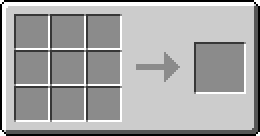




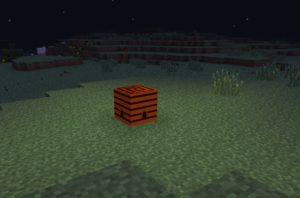

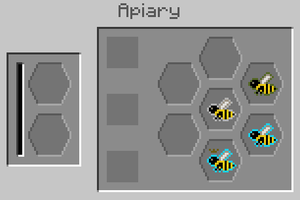


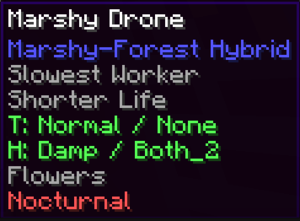


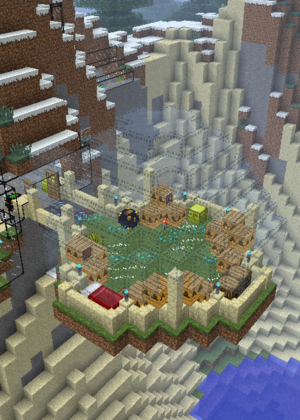

 Discussion
Discussion

